What Does the European Union´s Nature Restoration Law Mean for Nature Restoration in the Czech Repub
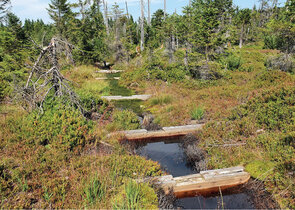
On 22 June 2022, the European Commission published a draft Nature Restoration Regulation of the European Parliament and the Council. It brings a legislative instrument to fulfil the EU Biodiversity Strategy 2030 adopted two years ago, which includes a plan for nature restoration and is one of the pillars of the European Green Deal. The European Commission thereby fulfils its task arising from the strategy, to submit a legally binding proposal for objectives in the field of nature restoration (restoration of disturbed ecosystems). The dramatic increase in extreme weather events, risks and threats in the area of living standards, security and social peace significantly increases the urgency of implementing measures aimed at restoring ecosystems, as a prerequisite for ensuring long-term food and energy self-sufficiency as well as human well-being.
Nature Conservation 2023 — 5. 6. 2023 — Nature and Landscape Management — Print article in pdf
Fragments of Successes from the Landscape of Changes and Stability:
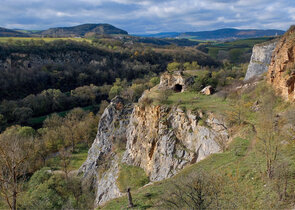
 In 2022, half a century has passed since the colourful limestone landscape nor far from Prague was declared as Protected Landscape Area (PLA). The Český kras/Bohemian Karst is a textbook of changes in nature from the sea with trilobites almost half a billion years ago, to the current overgrowing the landscape and decline in rare species. In contrast to mountainous and remote protected areas, the nature and the landscape have been co-created and shaped by humans over many thousands of years there, and it would be incorrect to consider nature conservation without humans, land managers, and visitors. The article presents half a century of rapid social changes as well as changes in the landscape and nature in this picturesque, dynamic and at the same time in some aspects stable area. Stable with respect to the fact which phenomena have been preserved under the title of the PLA, particularly by recovery and replacement of traditional management.
In 2022, half a century has passed since the colourful limestone landscape nor far from Prague was declared as Protected Landscape Area (PLA). The Český kras/Bohemian Karst is a textbook of changes in nature from the sea with trilobites almost half a billion years ago, to the current overgrowing the landscape and decline in rare species. In contrast to mountainous and remote protected areas, the nature and the landscape have been co-created and shaped by humans over many thousands of years there, and it would be incorrect to consider nature conservation without humans, land managers, and visitors. The article presents half a century of rapid social changes as well as changes in the landscape and nature in this picturesque, dynamic and at the same time in some aspects stable area. Stable with respect to the fact which phenomena have been preserved under the title of the PLA, particularly by recovery and replacement of traditional management.
Nature Conservation 2023 — 5. 6. 2023 — On Nature in the Czech Republic — Print article in pdf
Preface

Dear readers,
You have got a special English issue of Ochrana přírody/Nature Conservation Journal published by the Nature Conservation Agency of the Czech Republic. The Agency traditionally submits each year a selection of articles from the previous year translated into English and publishes it as a supplement aiming at sharing the experience with colleagues from abroad, thus at least partially overcoming language barrier which can be fully removed neither by automatic translators.
Nature Conservation 2023 — 5. 6. 2023 — Preface — Print article in pdf
Necessity to Introduce a New System for Financing Nature Conservation in sub-Saharan Africa
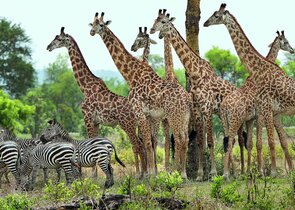
The European Union has been aware of the specific geopolitical status of Africa and its extraordinary importance for protection and conservation of biodiversity including natural ecosystems as well as of need to support sustainable economic prosperity there. The European Green Deal states: “The EU will launch a “NaturAfrica” initiative to tackle biodiversity loss by creating a network of protected areas to protect wildlife and offer opportunities in green sectors for local populations.” The article aims at proposing possible measures to meet the above high ambition.
Nature Conservation 2022 — 25. 5. 2022 — International Nature Conservation — Print article in pdf
Show Caves as Important Hibernacula of Bats in the Czech Republic
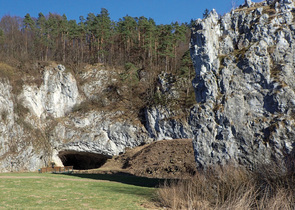
The International Union of Speleology (UIS) has declared 2021 as the International Year of Caves and Karst (IYCK). Unique phenomena in our landscape have therewith received deserved attention. Of more than 2,460 karst caves in the Czech Republic, 14 are show caves. All of them are fully legally protected according to national law and in addition, most of them are also protected as important bat hibernation sites (hibernacula) at the European level pursuant to the European Union’s legislation, namely the Habitats Directive. An important pillar of nature conservation is regular monitoring of Specially Protected animal species, and this also is the case in caves.
Nature Conservation 2022 — 25. 5. 2022 — Research, Surveys and Data Management — Print article in pdf
Monitoring Non-native and Invasive Alien Species in the Czech Republic
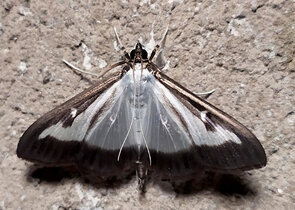
Invasive alien species (IAS), together with natural ecosystem fragmentation, degradation, destruction and loss, growing natural-resource consumption, environmental pollution and climate change, are among the main negative factors threatening native species and the biodiversity of native ecosystems. In addition, they can cause high economic damage/financial costs or adversely affect human health. Due to the ability of IAS to spread, an isolated approach to their management at the level of individual regions or countries is usually not effective; we need a targeted and tailored strategy that transcends national borders. Therefore, Regulation (EU) No 1143/2014 of the European Parliament and of the Council on the prevention and management of the introduction and spread of invasive alien species was adopted in the European Union, which was transposed into the Czech Republic’s legal order by amending Act No. 114/1992 Gazette on Nature Conservation and Landscape Protection, and other laws related to the issue, entering into force January 1, 2022.
Nature Conservation 2022 — 25. 5. 2022 — Research, Surveys and Data Management — Print article in pdf
Temporarily Unmown Grass Strips – A Hope for Productive Meadow Insects?
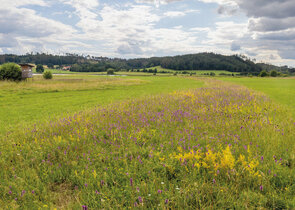
The agri-environmental-climate measures (AECM) announced by the Ministry of Agriculture of the Czech Republic are intended to support management methods mitigating the negative effects of intensive farming on the landscape and its inhabitants, including insects. Despite their productive nature, permanent grasslands are an important landscape component hosting a wide range of invertebrates. The right balance of production practices and compensatory measures can make a significant contribution to maintaining the diversity of grassland organisms and the ecosystem services they provide. The Nature Conservation Agency of the Czech Republic (NCA CR) has therefore commissioned a study on the effects of temporarily unmown grass strips on the diversity and abundance of meadow organisms. The aim of the study was to verify whether the retained parts of grass stands have a positive effect on the biota on common managed meadows of various sizes.
Nature Conservation 2022 — 25. 5. 2022 — Research, Surveys and Data Management — Print article in pdf
Shall We Go for Krkonoše/Giant Mts. Black Grouses with a Computer?
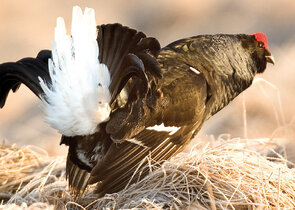
Yes, this is possible. Although computer modelling will not save the Black grouse, its outputs can significantly help in planning various practical measures in the field, regulating tourists at high-risk sites, and educating visitors. Habitat modelling, which uses the possibilities of geo-information technologies, remote sensing data, and advanced spatial analysis methods (e.g. Hirzel & le lay 2008, ElitH & leatHwick 2009), is applied significantly in the study of ecological requirements of (not only) animal species. These methods, technologies, and data allow extensive analyses of the relationships between the occurrence of species of interest and relevant environmental factors (e.g. Franklin 2010, Guisan et al. 2017). A common approach is to model the current or potential occurrence of species (e.g. tHuiller et al. 2004, Hirzel et al. 2006, Basille et al. 2008); the aim is to determine the landscape potential for their perma- nent or temporary occurrence and to evaluate the significance of individual environmental factors for their spatial expansion. Thus, habitat modelling is currently one of the most widely used approaches in conservation biology (e.g. Huck et al. 2010, Basille et al. 2013, Guisan et al. 2013).
Nature Conservation 2022 — 25. 5. 2022 — Research, Surveys and Data Management — Print article in pdf
Management Agreements: An Important Tool for Cooperation with Landowners and Land Managers in Nature

Ten years ago, the Nature Conservation Agency of the Czech Republic (NCA CR) began to conclude agreements on management through public contracts, setting up both management measures to be implemented and providing landowners or tenants with a subsidy / subvention. Consequently this practice has been step-by-step applied also by other State Nature Conservancy authorities, particularly Regional Offices. At present the agreements on management are one of the principal and commonly used tools in cooperation with land managers. The NCA CR is currently taking active steps to further expand the type of cooperation with landowners, our most important partners in practical nature conservation.
Nature Conservation 2022 — 25. 5. 2022 — Nature and Landscape Management — Print article in pdf
Experience in Training Shepherd Dogs Guarding Livestock

Shepherd dogs guarding livestock are rightly recommended as the most effective measure against grey wolves (Canis lupus) attacking livestock. Farmers are often criticized for hesitating to acquire shepherd dogs. However, few people can imagine the long and challenging journey to a reliable working shepherd dog.
Nature Conservation 2022 — 25. 5. 2022 — Nature and Landscape Management — Print article in pdf

